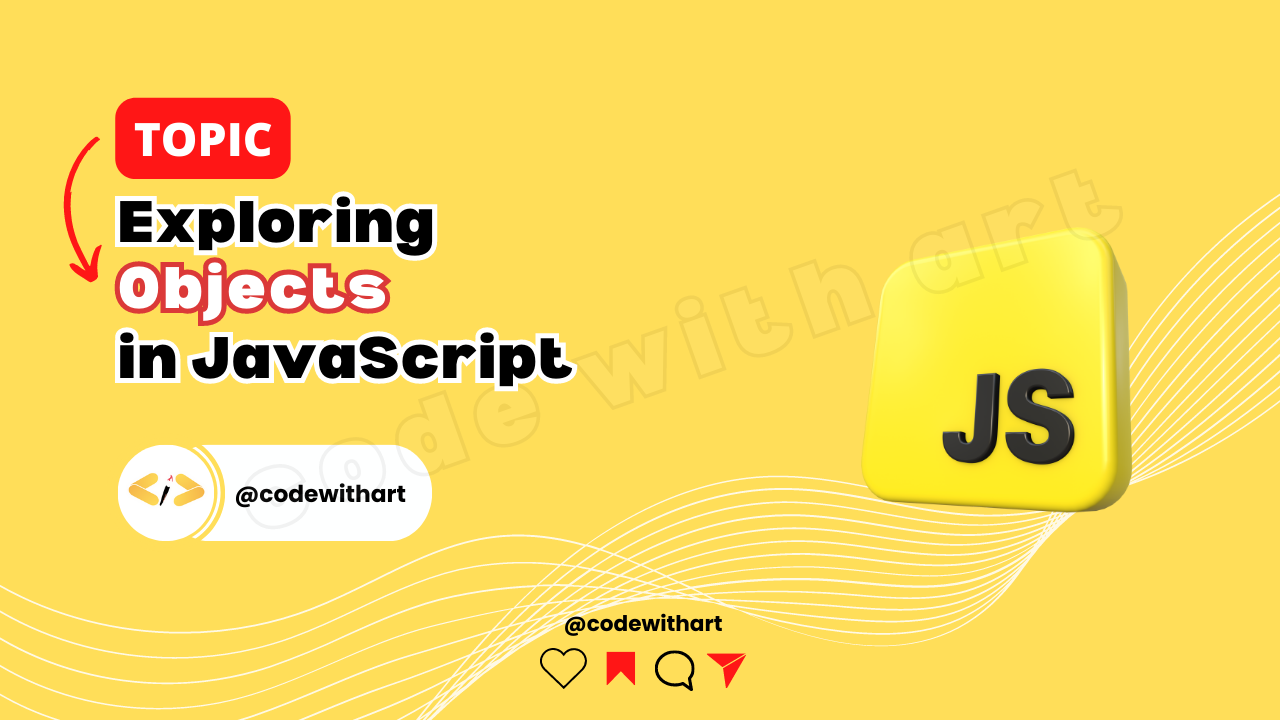Day 6🔥👨💻, Exploring Objects in JavaScript: Unlocking the Power of Key-Value Pairs
 codewithart
codewithart
Welcome, Coding Explorers! Objects are like treasure chests in the realm of JavaScript, holding vital information. Using key-value pairs, they let us store and organize related data. In this blog article, we'll delve into the interesting world of objects, discovering what they are, how to make them, access their characteristics, and execute operations. Prepare to discover the power of objects in JavaScript!
Understanding Objects:
Objects are complicated data structures that can store numerous values, which are referred to as properties. Each property is made up of a key and a value, producing a key-value pair. Objects can represent real-world entities such as a person, a car, or a book.
// Object representing a person
const person = {
name: "codewithart",
age: 25,
occupation: "Web Developer",
};
console.log(person.name); // Output: codewithart
console.log(person.age); // Output: 25
console.log(person.occupation); // Output: Web Developer
Creating Objects:
In JavaScript, there are two basic ways to create objects:
1. Object Literal Notation
2. The New Keyword with Constructor Functions.
1.Object Literal Notation:
Using curly braces {}, an object is created and its attributes and values are defined in object literal notation.
const car = {
make: "Honda",
model: "Civic",
year: 2021,
};
console.log(car.make); // Output: Honda
console.log(car.model); // Output: Civic
console.log(car.year); // Output: 2021
2.Constructor Functions:
Constructor functions allow us to generate a number of objects with comparable features and behaviors. We use the new keyword to call the constructor and then assign values to the object's properties.
function Person(name, age, occupation) {
this.name = name;
this.age = age;
this.occupation = occupation;
}
const person = new Person("codewithart", 30, "Developer");
console.log(person.name); // Output: codewithart
console.log(person.age); // Output: 30
console.log(person.occupation); // Output: Developer
Object Methods and Operations:
Objects can also contain methods, which are functions declared as properties. These methods enable objects to execute actions or calculations.
const calculator = {
add: function(a, b) {
return a + b;
},
subtract: function(a, b) {
return a - b;
},
};
console.log(calculator.add(5, 3)); // Output: 8
console.log(calculator.subtract(10, 4)); // Output: 6
Real-Time Example:
Define an object that represents a circle, with properties like radius and a method to calculate the area.
const circle = {
radius: 5,
calculateArea: function() {
return Math.PI * this.radius * this.radius;
},
};
console.log(circle.calculateArea()); // Output: 78.53981633974483
Objects are complex structures of data in JavaScript that allow us to store and organize related information using key-value pairs. We can unleash the full power of objects in our code by learning how to create them, access their properties, and conduct operations. Explore the universe of objects and unleash your JavaScript creativity!
Stay tuned for the next blog article, in which we'll dig into the intriguing realm of JavaScript events and interaction.
🤞 Remember to subscribe to stay up to date on the newest blog entries!
Have fun coding!🚀
Subscribe to my newsletter
Read articles from codewithart directly inside your inbox. Subscribe to the newsletter, and don't miss out.
Written by

codewithart
codewithart
"Let's code, innovate, and create waves in the digital realm. 🚀💡 Join me on this exciting journey as we shape the future through web development, blending creativity with cutting-edge technologies. Together, we'll build captivating experiences and leave a lasting mark on the digital landscape. Welcome to my corner of the web! ✨"